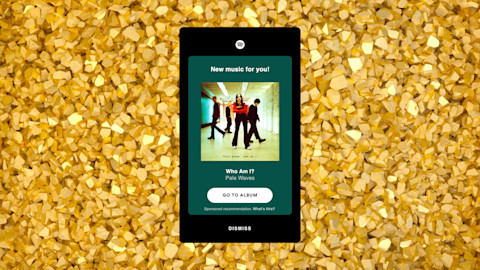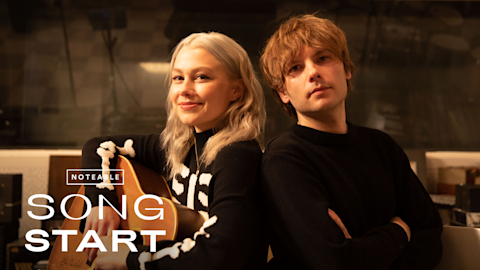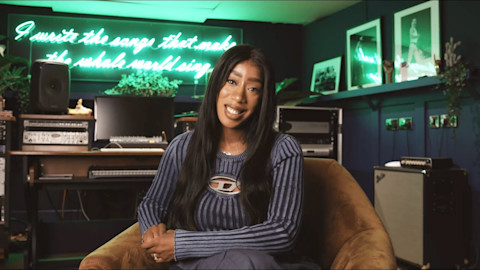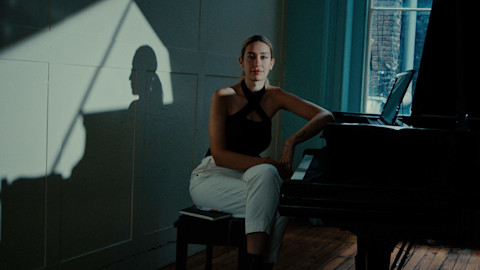You’re reading the Spotify for Artists blog, so you likely appreciate the way a great track sounds and you know a lot of hard works goes into creating them. Whether you have a team of experts helping you or not, there’s a ton to learn about what happens in the studio. And though no attempt to capture the idiosyncrasies of the craft could ever be absolutely comprehensive, this post digs into some of the tools, techniques, and talk you’ll likely encounter while laying down your own tracks.
4-Track Recorder: Artists of a certain age can recount stories of making their first demos using a 4-track. Introduced in 1979, the Tascam Portastudio was the world’s first recorder to use standard cassette tape, enabling home recording on a wide scale. This enabled artists to create quick and dirty demos without incurring studio costs, and created an entire lo-fi aesthetic embraced by artists like Guided By Voices and Kathleen Hanna of Bikini Kill. Perhaps the most celebrated of all 4-track cassette recordings is Bruce Springsteen’s sparse and somber Nebraska.
Condenser Microphone: Studios are judged by the quality of their gear and especially their microphones. Good-quality condenser mics are studio staples because they offer superior sound quality over the more standard spherical dynamic mics via their wide frequency response, higher sensitivity, and lower noise. In general, it’s best to opt for condenser microphones in any controlled environment like a studio, and avoid using them in situations like outdoor concerts.
DAW: A Digital Audio Workstation is a software application that allows you to record, edit, and mix multiple sound sources on a computer. Pro Tools is perhaps the most widely used DAW today; Logic Pro, Cubase, and Reason are all popular as well. Pro Tools was created by Digidesign for the Apple Macintosh in 1989 (and was originally called Sound Tools) and was touted as the “first tapeless recording studio.” Some of the early albums recorded with Pro Tools include Bjork’s Homogenic, Beck’s Odelay, and Mezzanine, by Massive Attack.
Demo: Most songs start life as a low-fidelity (lo-fi) demo. Like a napkin sketch that will evolve into a full design, a demo’s purpose is to illustrate enough of the song’s core idea so that others can collaborate and expand on it. While few people outside the artist’s inner circle will ever hear it, recording a demo is a critical step in shaping the end product because it offers the earliest opportunity to hear how a song’s various elements—from lyrics to instrumentation to tempo—work together. When demo versions do come to light, it can be pretty enjoyable to compare the final version with the working version. PJ Harvey acknowledged this when she released 4-Track Demos.
Drum Machine: Electronic instruments that create percussion sounds have been around since the 1930s, but it wasn’t until the ‘70s that things got interesting. That’s when drum machines that let users manually program their own beat patterns began to appear. The most famous drum machine is the Roland TR-808. In the early ‘80s it became ubiquitous, appearing on countless hits including Afrika Bambaataa’s 1982 “Planet Rock,” Marvin Gaye’s “Sexual Healing” and Whitney Houston’s “I Wanna Dance With Somebody.” Kanye West used the instrument on every track of 808s & Heartbreak.
Mixing Console: The console—sometimes also referred to as a “board” or “desk”—is the nerve center of any studio. Each of the audio signals on a session, whether they’re analog (from a microphone, for instance) or digital (say from a synthesizer) are routed into the console, where they can be manipulated and combined before being recorded.
Arguably the greatest console in history was the hand-wired Neve 80 series. Just ask Dave Grohl. In 2011 he bought the Neve 8028 that Nirvana used to record Nevermind and then made a documentary, Sound City, about the Los Angeles studio where this marvel of British engineering delivered classic records by Neil Young, Fleetwood Mac, and Pat Benatar among many others.
Plugin: Your DAW will likely come with a set of effects that you can “plug in” to your audio source to shape your track. Often they emulate the sound of vintage gear, like the Hammond B3 organ, or replace the work of vibey (not to mention bulky) devices like compressors, which literally compress an audio signal to a degree that is pleasing to the human ear.
Punch In: The term “punch in” refers to a studio trick that allows a producer to replace a portion of a track without destructively editing the entire thing. Imagine, for instance, a guitarist nailing the first seven bars of an eight-bar solo, before popping a string on the eighth. No need to ask for another full rendering; just punch in a new, corrected eighth bar, either on its own new track or on the original track itself. Each method requires a trained ear and steady hand to “punch in” and “punch out” at the right moment, but it can salvage sublime takes that otherwise would have to be scrapped.
Sample: Today sampling techniques have become such a integral part of making music that it’s hard to imagine a time when lifting pieces of music (or snippets or speech, loops of sounds from nature, or any number of other audio elements) from other sources and incorporating them into a new work was novel. The E-Mu SP-1200 was a popular sampler, and it’s impossible to overstate its importance in early hip-hop as well as house and techno of the late ‘80s. The 1200’s gritty 12-bit sound, choppy samples, and murky bass lines defined an aesthetic in much the same way as cassette 4-tracks defined lo-fi bedroom records. Madlib made The Unseen entirely on a 1200; Public Enemy used one on the opening track of Fear of a Black Planet.
Scratch Track: A demo of sorts, a scratch track is the recording of a single element of a song—the bass line or vocal, for instance—in isolation, so that other elements of the song can be built around it. Once this scratch performance has served its purpose, it is replaced with the “real” version. Ironically, scratch tracks do end up on final mixes with some regularity when a singer or musician can’t match the feeling of that first take.
Take: You’ll hear this word a lot in a recording session. Similar to how it’s used in film, a “take” refers to a single attempt at recording a song or a part of a song. And as it is in film, a take doesn’t have to be 100% perfect to be considered a keeper, since you can isolate parts of different takes and edit them together.
Tape Machine: Before the advent of digital recording, all studios captured music on reel-to-reel machines that pulled magnetic tape across a mechanism, called a head, which converted an electrical signal into magnetic fluctuations that were written to the tape. The width of the tape, measured in inches, determined the fidelity of the recording; thus a studio might have a ¼” tape machine, a ½” machine, and so on. The pride of any analog recording studio was its 2” Ampex tape recorder, and despite the relative scarcity of large-format magnetic tape today, many modern producers, including Steve Albini and John Vanderslice, still prefer recording to tape.
Turntable: No single piece of gear had more influence on early hip-hop and dance recordings than the turntable, and no other turntable could touch the Technics SL-1200. Durable and reliable, its direct-drive, high torque motor made it possible for pioneers like Grandmaster Flash to mix the beats from two records with precision. Furthermore, its powerful motor allowed a record to spin at the correct rpm even when manipulated by a DJ. Thus scratch techniques like the “scribble,” the “crab,” and the “backspin” were invented. Panasonic manufactured the so-called “wheels of steel” from 1972 until 2010 and then, after a petition to bring the 1200 back got 27,000 signatures, released an updated model in 2016.
This is the latest installment of our ongoing series where we define the terms that will help you define your career. Read about here.
-Nate Baker






